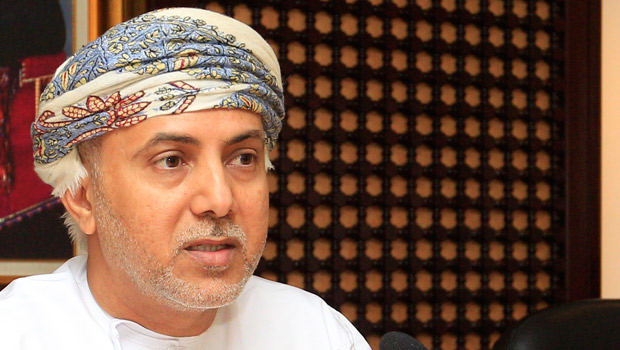
Oman’s new mining law to help attract much-need investment

Oman’s new mining law, which was recently drafted by the Public Authority for Mining and is awaiting approval from the relevant ministries, will help attract investment and develop the sector to enhance its contribution in the country’s gross domestic product (GDP).
“The Public Authority for Mining has already drafted the law and sent it to the concerned government ministries to review it,” Ahmed bin Hassan Al Dheeb, undersecretary at the Ministry of Commerce and Industry, told journalists, on the sidelines of the Oman Mineral and Mining Exhibition and Conference. The draft law is currently with the Ministry of Justice for review and approval.
He said the new law will be more flexible, more easy and transparent. “There is (going to be) more control in terms of processing.”
Al Dheeb said the Public Authority for Mining is formulating a mineral strategy to enhance the sector’s contribution to GDP.
Addressing the conference, Dr. Ali Alrajhi, assistant general manager at the Public Authority for Mining, said the authority will have four major focus areas—legislation, organisational structure, investment and local community—while developing the sector. “We have almost finished the framework of the strategy,” noted Alrajhi. He also noted that Oman has the potential for viable metallic and non-metallic mineral deposits for development.
The newly established authority is focusing on exporting processed minerals, rather than raw minerals to enhance value addition.
Presenting a paper on the development of Oman’s mineral industry, MowafaTaib, mineral industry expert, US Geological Survey, said mineral production would increase substantially in the next five years as a result of several expansion projects.
He said the non-oil sector had contributed 18 per cent of the Sultanate’s GDP in 2014 and the mining sector alone contributed two per cent of the GDP in 2013.
Taib added that Oman had witnessed strong growth in industrial minerals, especially in the last decade. Gypsum production had surged ahead by six times between 2010 and 2014, while limestone output had soared from 4.6 million tonnes to 8.7 million tonnes per year during the period. Cement and marble production had also risen in the last five years.
He also noted that Oman is a leading producer of chromite and that the country is the second leading producer of gypsum, after Iran, in the region, according to 2014 data.
The Sultanate is also the fifth largest producer of aluminium, after the United Arab Emirates, Bahrain, Saudi Arabia and Qatar. Also, the Gulf Cooperation Council region is the second largest producer of aluminium, after China, in the world.


Trump weighs using $2 billion in CHIPS Act funding for critical minerals

Codelco cuts 2025 copper forecast after El Teniente mine collapse

Electra converts debt, launches $30M raise to jumpstart stalled cobalt refinery

Barrick’s Reko Diq in line for $410M ADB backing

Abcourt readies Sleeping Giant mill to pour first gold since 2014

Nevada army depot to serve as base for first US strategic minerals stockpile

SQM boosts lithium supply plans as prices flick higher

Viridis unveils 200Mt initial reserve for Brazil rare earth project

Tailings could meet much of US critical mineral demand – study

Kyrgyzstan kicks off underground gold mining at Kumtor

Kyrgyzstan kicks off underground gold mining at Kumtor

KoBold Metals granted lithium exploration rights in Congo

Freeport Indonesia to wrap up Gresik plant repairs by early September

Energy Fuels soars on Vulcan Elements partnership

Northern Dynasty sticks to proposal in battle to lift Pebble mine veto

Giustra-backed mining firm teams up with informal miners in Colombia

Critical Metals signs agreement to supply rare earth to US government-funded facility

China extends rare earth controls to imported material

Galan Lithium proceeds with $13M financing for Argentina project

Kyrgyzstan kicks off underground gold mining at Kumtor

Freeport Indonesia to wrap up Gresik plant repairs by early September

Energy Fuels soars on Vulcan Elements partnership

Northern Dynasty sticks to proposal in battle to lift Pebble mine veto

Giustra-backed mining firm teams up with informal miners in Colombia

Critical Metals signs agreement to supply rare earth to US government-funded facility

China extends rare earth controls to imported material

Galan Lithium proceeds with $13M financing for Argentina project

Silver price touches $39 as market weighs rate cut outlook

















